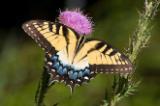 © Steve Vaughn/Panoramic Images (Florida Title Image Large)
© Steve Vaughn/Panoramic Images (Florida Title Image Large)

Conservation Priorities Data
Florida has a wealth of GIS data to inform conservation planning and prioritization. Statewide datasets identify important resources such as species habitat, ecological corridors and significant water resources, providing objective, science-based decision support to policy-makers, planners and land managers.
Conservation Priorities Data
-
Aggregated CLIP Priorities
The Aggregated Critical Lands and Waters Identification Project (CLIP) Priorities depict areas of opportunity for protecting biodiversity, landscapes, and water resources across the state.
-
FNAI Rare Species Habitat Conservation Priorities
The FNAI Rare Species Habitat Conservation Priorities data layer prioritizes places on the landscape that would protect both the greatest number of rare species and those species with the greatest conservation need. It is intended to show areas that have a high statewide priority for acquisition to protect habitat for 248 of Florida's rarest plant and animal species.
-
Florida Ecological Greenways Network
The Florida Ecological Greenways Network represents a statewide network of ecological hubs and linkages designed to maintain large landscape-scale ecological functions throughout the state.
-
Significant Surface Waters
The Significant Surface Waters data layer prioritizes lands to protect significant surface waters of the state, including shellfish harvesting areas, seagrass beds, Outstanding Florida Waters, National Wild and Scenic Rivers, springs, estuaries included in the National Estuary Program, water bodies important for imperiled fish, and water bodies important for public water supply.
-
Strategic Habitat Conservation Areas
The goal of the Florida Fish and Wildlife Conservation Commission's Strategic Habitat Conservation Areas is to identify the minimum amount of land needed in Florida to ensure long-term survival of key components to Florida's biological diversity. The SHCAs identify important remaining habitat conservation needs on private lands for 30 terrestrial vertebrates.
-
Under-Protected Natural Communities
The Under-protected Natural Communities shows the statewide distribution of 12 natural communities that need additional protection, including upland glade, pine rockland, rockland hammock, scrub, dry prairie, seepage slope, sandhill, sandhill upland lake, coastal uplands, upland hardwood forest, pine flatwoods, and coastal wetlands (mangrove and salt marsh).











